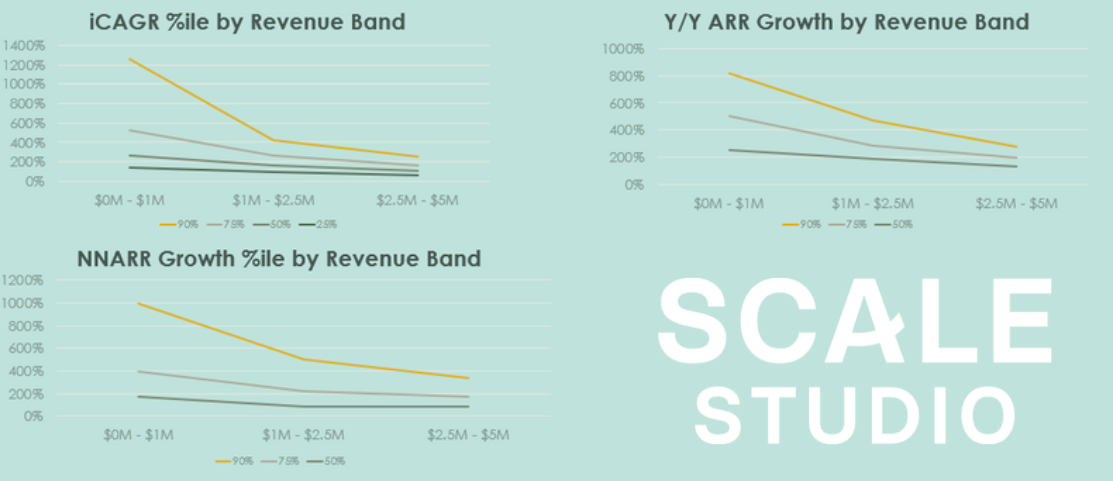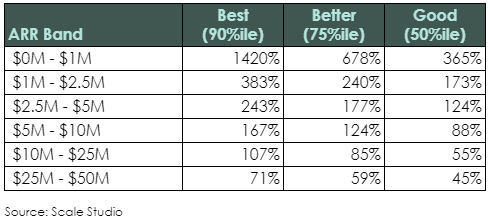Take a look at the following charts. They show “good, better, best” growth rates for different revenue bands across different growth metrics. What do they have in common?

Any way you slice it, growth tends to spike early then decline (hopefully slowly!) over time. It can be rough on first-time founders: you invest more time and effort, hire great people, and your best days of growth are behind you!? Yes and no.
The reason growth rates decline over time is largely just math. Growing ARR from $100k to $1M in a year gives you a large growth rate percentage (900%). But that $900k in new ARR is what you’ll produce in a month when you’re at, say, $15M in revenue.
Knowing that growth rates will decline frees you up to focus on extending your high growth period for as long as possible. We recently looked at the performance gap that widens over time when you compare a top-performing startup to a middle-of-the-road competitor.

And that gap isn’t just a number. It’s an advantage in time (scaling faster), hiring (easier recruiting), and capital (investors want in). There are countless “median performers” that are ultimately successful, but they’re fighting a different fight than a hyper-grower.
Growth decline is a universal law for startups, but the rate at which it happens isn’t. You can slow the rate of decline by doing things like:
- Selling into a large market. Diminishing returns in small markets are a thing — if there aren’t a lot of customers to sell to, success will actually burn through your addressable market quicker. Balance providing value with the volume of companies that need your product.
- Pursuing new use cases. Don’t let new use cases be an accident. Make sure product development is intentional so that you’re continuously opening up new markets.
- Aligning internally around expansion strategy. Your whole company can contribute to a customer expansion strategy. Product teams should always be thinking about what features will bring additional users onto the platform. Customer Success should measure which levers lead to upsell and expansion. Sales should nurture relationships beyond the initial win. Align your entire organization around a documented strategy to get customers buying more.
That list goes on and one. But the theme is this: know from the beginning that you’re not just fighting to grow quickly, you’re also fighting against slowing down too quickly. Build in this awareness from the get-go and you’re setting your company up for long-term success.
Take a deeper dive into growth rate metrics: